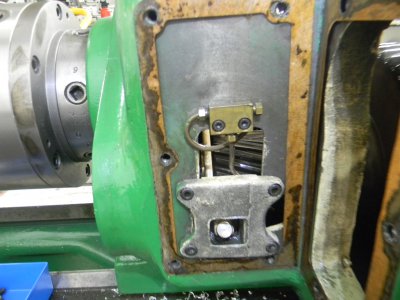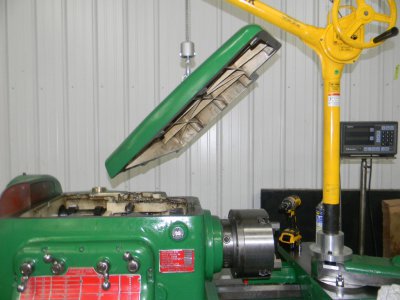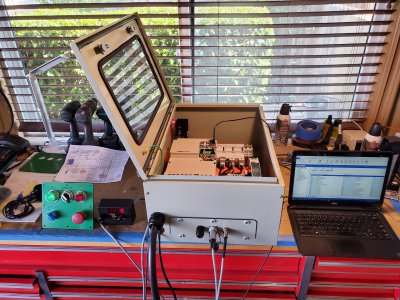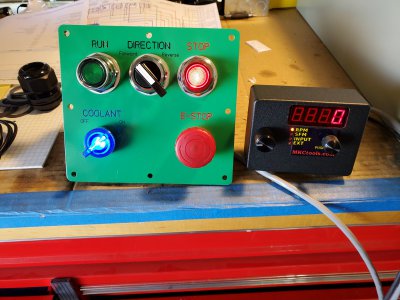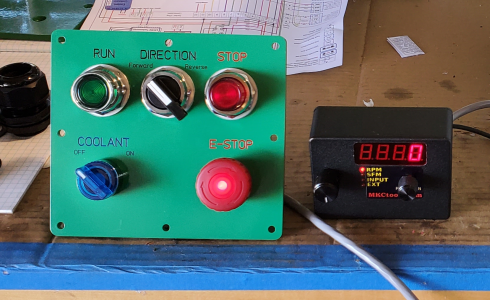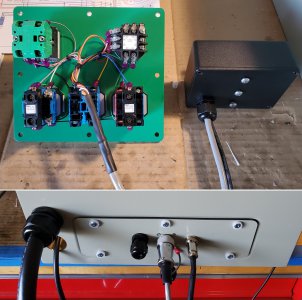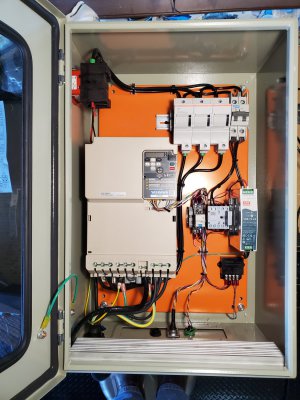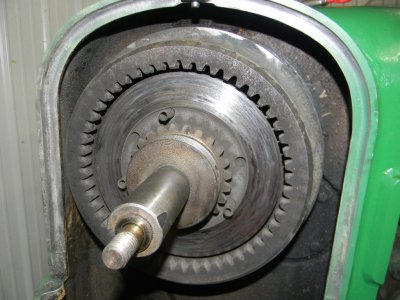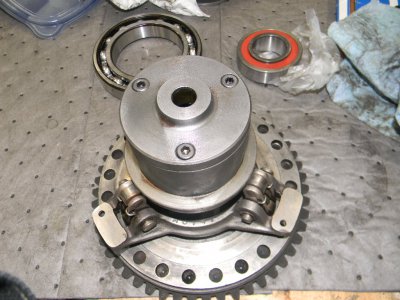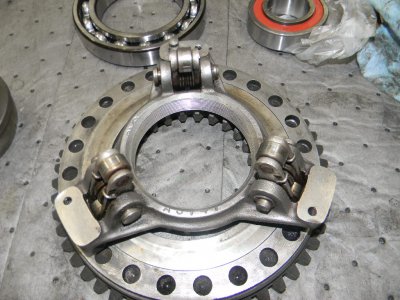Nice job, Mark, on the VFD system. I use a taculator on a few of my machines and like them.
I do have some thoughts on speeding up these old lathes. While I believe it is true that a given lathe may use the same spindle bearings for several RPM ranges, I believe that it is also likely that they did not use the same preload. As speed increased, preloads would go down. An example might be my Pacemaker which has externally adjustable spindle bearings. This is a good thing if an experienced person is doing the adjusting - something that was probably a safer bet in the 1940’s and 1950’s. The Pacemaker had a top spindle speed of 1,000 to 2,000 RPM.
Another thing to keep an eye on might be the secondary shafting and bearings. In this class of machine, especially with helical gears, most of the shafts would be on tapered bearings. Although these are not preloaded in the same way as a spindle, they are set for clearance. On the Pacemaker they are adjustable so periodic monitoring of their temperature might be something to check on. Also, if you do decide to back off on the spindle bearings, remember that a little goes a long way. You would need to re-seat them and then run through your spindle deflection test and monitor surface finish.
But before doing all this you might want to consider something I did on the Rivett. The Rivett has a 3,500+ RPM headstock. It uses an ISO 150 which is a 40W gear oil in the headstock. I believe they did this to dampen the effect of the gearing on surface finish. But this heavy oil makes restricting flow to the bearings important to guard against excessive heat rise from over lubrication. But in a colder shop, the oil can take a considerable amount of time to reach the bearings on initial startup. My solution was to go to a synthetic oil (Mobile SHC) of the same viscosity. This greatly reduced the time it takes for oil to reach the bearings. It also reduces friction. The Rivett has at high speed some wrap around and aeration of the oil. It also helped with these.
Your 60 series might be a good candidate for this as it might reduce some friction in the bearings and increase the efficiency of the oil pump in terms of oil volume. It would also allow for quicker circulation of oil in the head stock, which would also help with heat reduction. But of course, like everything, there is at least one downside. The stuff is not cheap. But it might offer some help for a modest speed increase.


